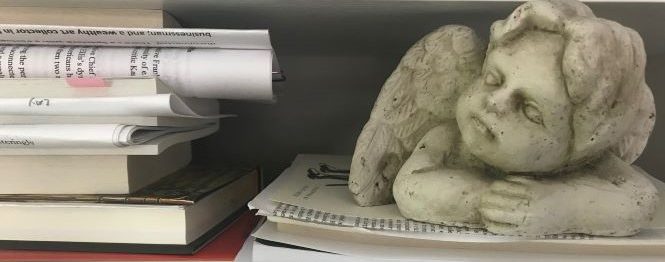 Every so often I’ll be overwhelmed with desire to read a certain Young Adult (Y.A.) novel. I’ll resist that desire, hovering over the “buy” button online at Amazon or Barnes & Noble, thinking, thinking and, yes, over thinking. I always end up in the same place of “oh no, you can’t” and move on to purchases of adult literary novels.
Every so often I’ll be overwhelmed with desire to read a certain Young Adult (Y.A.) novel. I’ll resist that desire, hovering over the “buy” button online at Amazon or Barnes & Noble, thinking, thinking and, yes, over thinking. I always end up in the same place of “oh no, you can’t” and move on to purchases of adult literary novels.
Two forces fuel the resistance. I want to read far too many adult fiction and non-fiction books, both new and past, for which there are not enough hours in a lifetime. How then can I allow such an indulgent detour? Second, I wonder if I’m being childish. Will I next be buying stuffed animals and tossing them onto my bed? I feel embarrassed.
A recent essay in The New York Times Book Review releases me from my ridiculous self-consciousness. According to “The Kids’ Books Are All Right,” academics and critics, agents and editors of adult literature are reading Y.A. novels. We’re not talking Harry Potter and Twilight. They’re going backward to read childhood classics they missed, let alone reading new releases.
What struck me was not that I could sigh with the relief of permission, knowing heavy-weights in the literary community eagerly read Y.A. novels, but that I got the answer for my perplexing desire. Y.A. books allow for a kind of timelessness and wonder, the article explains. It quotes Jesse Sheidlower, editor at large at the Oxford English Dictionary, who says, “When you read these books as an adult, it tends to bring back the sense of newness and discovery that I tend not to get from adult fiction.”
When I read The Book Thief and The Invention of Hugo Cabret, two best-selling Y.A. novels, those were the feelings I felt: timelessness, wonder, newness and discovery. Why deprive myself of them? No longer will I hover with indecision over the Y.A. books that catch my attention. I’ll read them, and I’m going to start with Suzanne Collins’ popular The Hunger Games and Rebecca’s Stead’s When You Reach Me, the 2010 Newbery Medal winner I’ve resisted for a year. After that, perhaps I’ll read The Brave Escape of Edith Wharton by Connie Nordhielm Wooldridge, a biography for ages 12 and up, braving my own escape into books that just might keep me young and hopeful.

I’m no literary “heavyweight” but until recently I annually re-read parts of “The Dark is Rising” series by British author Susan Cooper. I loved the King Arthur story as a teenager, and these modernized the idea and expanded on the Light vs. Dark theme. Loved these like old friends — so much so that, although my book storage space is limited, I keep my original, tattered paperbacks in an honored space. (P.S. For anyone interested, don’t bother with the recent movie based on the first book in this series — READ THE BOOK!)
LikeLike
I have a bookshelf reserved for the books I read as kid — “Harriet the Spy” and “The Phantom Tollbooth” and “Mary Poppins,” for example. Some of them I’d like to reread but whether or not that happens, it’s satisfying just seeing them as I pass by the bookcase.
LikeLike
I’m glad to hear you admit your Y.A. diversions. I emailed you at Allsides to recommend the Gallagher Girls series. I’ll admit it’s not classic literature. It’s more like Harry Potter meets James Bond for girls. I promise it will make you laugh out loud. Besides, you can read it in an afternoon, so what do you have to lose?
“I’d Tell You I Love You, but then I’d have to Kill You” by Ally Carter.
LikeLike
Thanks for emailing to the Allsides book show and for checking in here. Your urgings toward the Gallagher Girls Y.A. books speak loud and clear. I’ll check ’em out!
LikeLike
17 does fall in the range considered for Young Adult Literature, which I see as 12 and above, up to 18.
Checking it out with the American Library Association, I found this confirmation: “When the term first found common usage in the late 1960’s, it referred to realistic fiction that was set in the real (as opposed to imagined), contemporary world and addressed problems, issues, and life circumstances of interest to young readers aged approximately 12-18.”
LikeLike